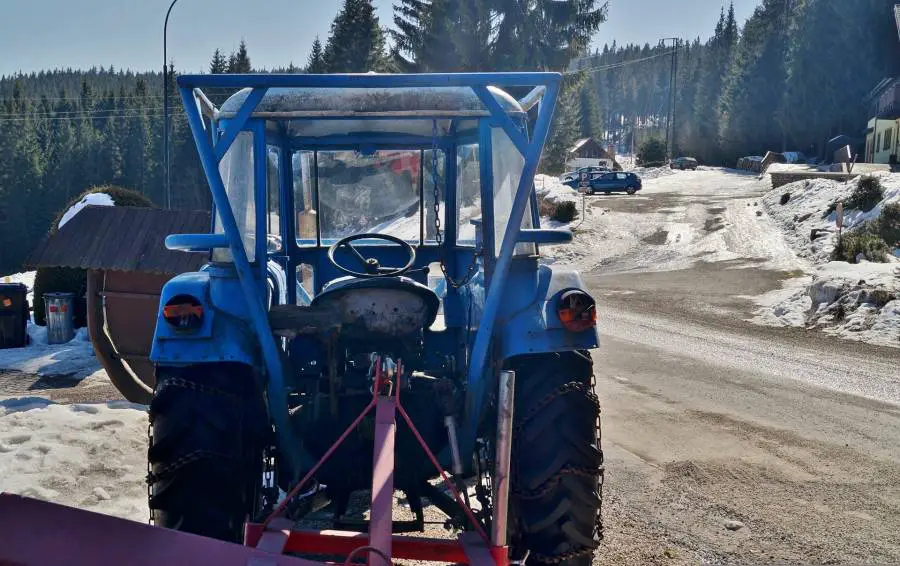Table of Contents
Homemade tractor rakes have been around for decades but have only recently gained popularity.

It is, however, an easy way to turn your yard into a garden you will enjoy all year round.
A homemade tractor rake might be the perfect solution if you want a way to rake your leaves.
With it, you can easily create rows in your yard and plant seeds or seedlings in them.
You can also use it to cultivate your garden soil by evenly distributing fertilizer over the entire area.
Follow this article to find out what it takes to prepare your homemade tractor rake.
Materials Needed To Build Homemade Tractor Rake
Different materials are needed to build your homemade tractor rake from scratch.
However, the materials you need to build a tractor mainly depend on which tractor design you want.
Here are some materials you might need for the homemade tractor rake designs; wood, rake, bolts, wheels, and a motor.
A Complete Guide To Making Your Homemade Tractor Rake
Step 1: Make The Main Plate
The first thing you need to do is make the main plate. It will be the base of your homemade tractor rake, so it needs to be strong enough to do the job.
The best choice would be a robust, lightweight metal that doesn’t rust. It should also be wide enough to hold your weight.
The next step is to make the parts for the rake. Careful measuring and welding will be needed, but it will be worth it.
Step 2: Use A Three-Point Hitch
The three-point hitch is a simple system that allows you to raise and lower the tractor rake.
It has three contact points with your tractor: the drawbar, pintle hook, and lifting yoke.
You first need to attach your tractor’s drawbar to your hitch (the part where all these pieces connect).
This method will allow it to be raised and lowered without problems.
Next up is attaching a pintle hook at one end of yours.
It will enable you to rotate it around 90 degrees so that it not only lifts things up but also lowers them down once again if needed.
Step 3: Make The Teeth And The Rake Bucket
Now that you’ve got all of the materials, it’s time to start making your rake bucket.
The first thing is to cut a piece of 1/4-inch steel and grind it down with a grinder until it’s smooth and round.
Then, to ensure that the edge is well-defined and sharp, you must file it. It will help your rake slide more easily over it when you use the tool on your teeth.
Next up is making sure that everything fits together nicely.
So, you must measure where each hole must go on both sides of the plywood piece before drilling holes in both parts.
If required, mark these locations beforehand by measuring where one edge meets another at a 90-degree angle, then drill holes accordingly.
Step 4: Place The Teeth In Their Slots
Now you should have a good idea of how your homemade tractor rake will function. Nevertheless, there are a few things you should still do before putting it together.
Please make sure the teeth are aligned with their slots. It will help prevent them from breaking or becoming too loose over time.
The teeth will all function equally well in raking up grass if they are all the same height.
Step 5: Lubricate The Pivot Arm
The grease can be applied using a grease gun or simply putting it on with your fingers. However, it is preferable to use a gun.
You may prefer just getting in there and smearing it with your finger.
Once you’re done applying grease, wipe off any excess with a rag before using your homemade tractor rake.
Assemble Everything
After all the tractor parts have been set in order, it is time to join the tractor’s base to the rake.
It is essential to ensure that everything is perfectly aligned and in the correct position, or else it won’t fit properly.

Tips To Consider When Building A Homemade Tractor Rake
When building a tractor rake, you must ensure that you have suitable materials.
There are many considerations and tips to put in place when building your homemade tractor rake. Here are things to consider:
- The type of metal you use must be strong and durable. A few different metals can be used for building your homemade tractor rake. The most common ones are steel and aluminum. Steel is more durable than aluminum, so if you want something that will last longer, go with steel. Aluminum is lighter than steel, so aluminum is better suited if you want something light enough to move quickly around your garden or farm field.
- You also need to ensure that it is corrosion resistant to withstand the elements for a long time without getting damaged or rusted.
- You will also need to look at the kind of finish that you want your homemade tractor rake to have to ensure that it will last longer.
- Also, your homemade tractor rake should be lightweight to prevent overweight for your tractor. The heavyweight reduces its performance levels when using it for plowing or other heavy tasks.
With all these things in mind, you need to explore tractor tires, which include their shape, material, and accessories.
It will help you build a rake that fits your needs, whether you use an old or new tractor.
General Maintenance On Your Homemade Tractor Rake
Working with a homemade tractor rake can be difficult if you don’t know how to handle it. You may not know about this machinery or how to maintain it.
To ensure that your homemade tractor rake lasts as long as possible, we’ll go over the steps that must be taken to maintain it properly.
Make Sure The Wheels Are In Good Working Order And Uniform
- Check for cracks and broken welds.
- Check for uneven wear.
- Check for alignment.
Check For Proper Air Pressure In Your Tires
Ensure your tires are correctly inflated and have the proper tread width and depth (treadwear rating).
Check The Rakes To Make Sure They Are Straight And Aligned Properly
- You should check the rakes to ensure they are straight and properly aligned. You want to ensure that your rake is positioned correctly and not bent, kinked, or tilted. You can use a ruler or tape measure to do this.
- The front part of your rake should be aligned with the side of your tractor’s bed before you put it on there. If it isn’t already aligned correctly, move it back so that it is perpendicular to where you want it situated.
Check Nuts, Bolts, And Welds
- On the rake, check all nuts, bolts, and welds.
- Look for any loose or missing nuts, bolts, or welds.
- Check for cracks in welds.
- Inspect the chain links to ensure they do not show wear and tear from use (e.g., rusting).
Grease Bearings, Etc.
Grease is a cheap and easy-to-apply lubricant that helps reduce friction between moving parts. It can be applied with a grease gun or a grease tube.
If used correctly, grease will keep your homemade tractor rake running smoothly for many years.
- Make sure all of the bearings are greased. It is vital before you start using it again on another job site where there might be some dirt.
- Apply light oil to each bearing before installing them back in their respective locations. It should be done, so they don’t get stuck when trying to spin freely inside their housing units.
Inspect Your Tractor Rake Regularly To Prevent Future Breakdowns
- Taking care of your homemade tractor rake is vital for the health of your equipment and its longevity. Tractor rakes are made from various materials, making them susceptible to wear and tear if not maintained properly.
Conclusion
As you can see, there’s nothing complicated about making a homemade tractor rake. All you need is some scrap lumber and a few tools.
Hopefully, this guide has helped you understand the process of making this tool and will inspire you to start your project.
